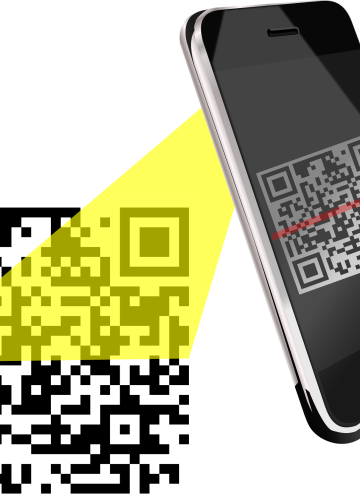Integrating virtual medical assistants (VMAs) into healthcare environments signifies a significant change in the delivery of medical services. These digital aids, powered by natural language processing and machine learning, offer advantages such as increased efficiency, enhanced patient engagement, and improved accuracy in administrative tasks. Addressing strategies and considerations is crucial to successfully implementing VMAs in a healthcare setting.
Understanding the Role of Virtual Medical Assistants
A virtual medical assistant can perform a range of tasks, typically beginning with administrative assistance. They can handle appointment scheduling, send patient reminders, and access medical histories, all contributing to streamlining processes. Moreover, VMAs can aid engagement by responding to questions, providing details on treatment protocols, and offering round-the-clock patient support – ultimately enhancing the overall patient experience.
Assessing Needs and Objectives
Before incorporating a VMA into operations, it is imperative to evaluate the healthcare facility's requirements. This evaluation should involve identifying challenges and patient interactions that impede workflow efficiency. For example, a bustling clinic might require a VMA to manage schedules and reminders. At the same time, a specialized practice could benefit more from a VMA proficient in addressing inquiries related to procedures and treatments. Establishing objectives for integrating VMA is crucial. These goals should align with the aims, such as reducing missed appointments, boosting patient satisfaction ratings, and improving communication between patients and healthcare providers. Given the plethora of VMAs on the market, selecting the technology is paramount. Practices should assess VMAs based on their features, ease of system integration, and adherence to healthcare regulations like HIPAA. Conducting platform trials can aid in identifying suitable solutions for the organization's requirements.
Crafting an implementation strategy is essential for a VMA integration. This plan should outline the deployment timeline, staff training procedures, and patient communication tactics. Involving department stakeholders—such as personnel, medical professionals, and IT experts—can promote a collaborative approach that addresses all viewpoints. Practical training for both staff and patients is crucial for VMA's success. Staff members must be proficient in assisting patients with inquiries or navigating the system. Providing user resources and continuous support can help optimize VMA efficiency. On the side, it's crucial to communicate about what the VMA can do and how to use it. This information can be shared through brochures, sessions, during appointments, and interactive digital content that guides patients through using the VMA.
Monitoring Performance and Gathering Feedback
After implementation, continuous monitoring of the VMA performance is vital to evaluate how well it meets the organization's objectives. Regular feedback from staff and patients can pinpoint areas needing improvement, ensuring that the VMA adapts and effectively serves its users. Key metrics to consider include decreased staff burden, patient engagement levels with the VMA, and overall patient satisfaction. Analyzing this data will help adjust the VMA and inform decisions regarding its ongoing role in the organization.
Addressing Security and Compliance
The VMA must adhere to healthcare regulations. Practices should implement security measures to protect data and uphold confidentiality standards. This involves employing encryption for data transmission software updates and educating staff on data privacy protocols.
Furthermore, healthcare institutions must stay alert to any vulnerabilities in the VMA system by conducting risk assessments and updating protocols to address any threats.
Future Directions in Virtual Medical Assistants
With the advancement of technology, virtual medical assistants are expected to evolve and expand their capabilities. Features such as integration with telemedicine platforms, using analytics to understand behavior, and improving natural language processing will further enhance the functions of VMAs. Healthcare institutions need to keep up with the trends and advancements in this field to ensure they are utilizing the efficient solutions available.
Investing in assistants not only demonstrates a forward-thinking approach to patient care but also offers a significant opportunity to boost operational efficiency. By planning integration, providing training for staff and patients, and continuously monitoring performance, healthcare facilities can benefit from using virtual medical assistants, ultimately transforming the healthcare experience for patients and providers alike.
Conclusion
Incorporating virtual medical assistants into healthcare environments goes beyond embracing technology; it enhances patient care and operational efficiency. By developing a devised strategy that includes understanding requirements, selecting technology, thorough planning, training staff members, monitoring performance levels, emphasizing compliance adherence, and keeping abreast of upcoming trends, healthcare organizations can implement DocVA VMAs to create a more responsive and interactive healthcare setting.
The healthcare industry is advancing rapidly. Integrating medical assistants represents a significant stride towards a more innovative and patient-focused approach to healthcare. Let's welcome this transformation and harness the potential of medical assistants to enhance the evolving landscape of healthcare. Healthcare institutions need to adapt and adopt this technology to ensure the delivery of high-quality care while also improving efficiency. Through planning and execution, virtual medical assistants have the potential to revolutionize healthcare delivery, fostering an environment that's more efficient, patient-centric, and forward-thinking for both patients and providers alike. The future of healthcare is already unfolding before us, with assistants leading the charge toward a promising tomorrow. Let us embrace this transformative technology wholeheartedly and unleash its capabilities to enhance outcomes and streamline administrative processes within our healthcare systems. The opportunities assistants present are limitless, urging us to recognize their value in the ever-evolving realm of healthcare. Let's embark on this journey towards a future for healthcare with medical assistants at our side. Keep informed, stay innovative, and let's collaboratively shape the future of healthcare!
Continue to explore and uncover the opportunities presented by medical assistants and witness how they can revolutionize your organization into an efficient and patient-focused healthcare facility. This voyage is merely at its inception, so let us persevere along this trajectory toward a sophisticated future for healthcare.
























